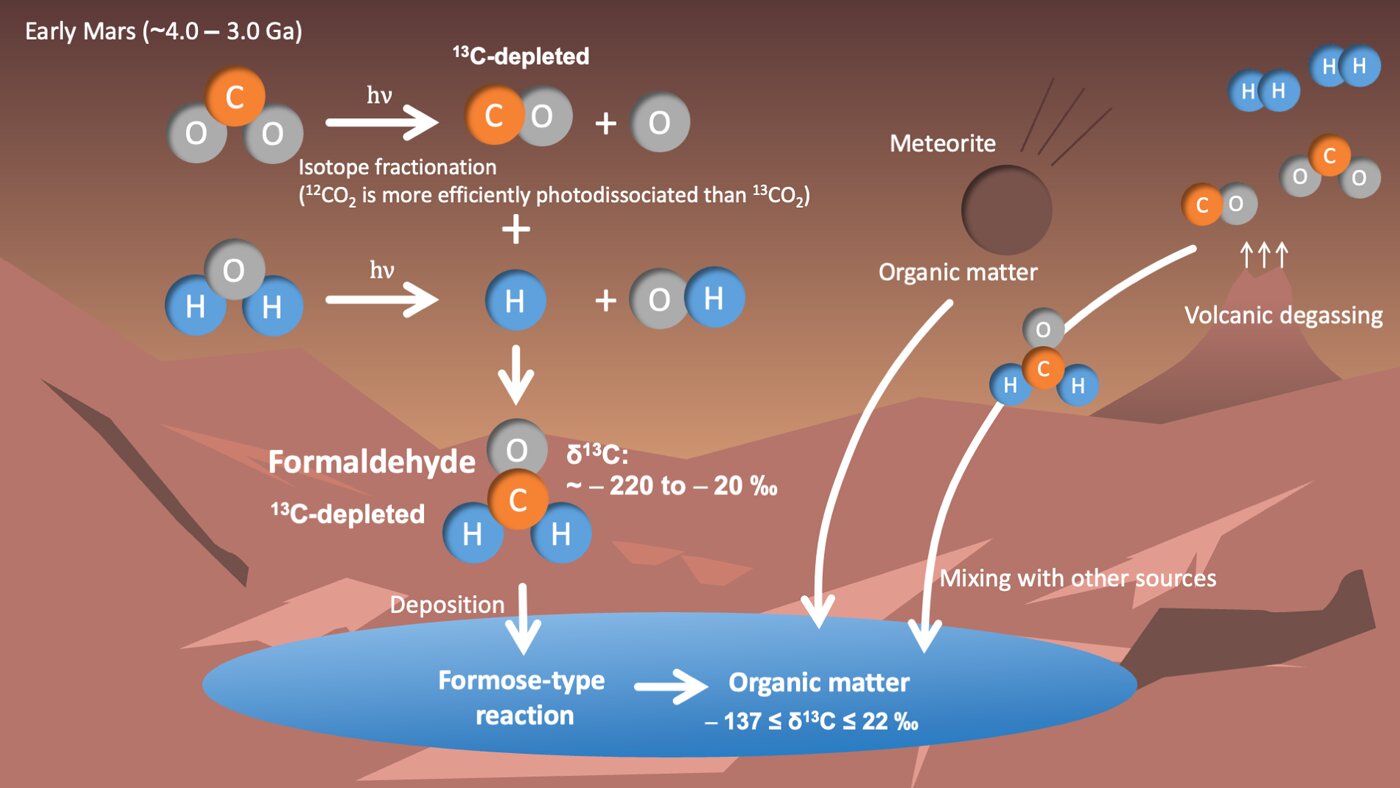Although Mars is currently a cold, dry planet, geological evidence suggests that liquid water existed there around 3 to 4 billion years ago. Where there is water, there is usually life.
The Mars rover Curiosity (operated by NASA) revealed that organic matter found in sediments from that era on Mars are unusually depleted in 13C. It was also discovered that the carbon isotope ratios varied significantly between samples. However, the reason for this variability was a mystery.
Formaldehyde can generate complex organic compounds such as sugars, which are essential for life. In other words, formaldehyde may be the missing factor that could explain the anomalous values of the Curiosity rover samples. It could also be a sign of past life.
This model provides a possible explanation for previously unexplained findings, such as why 13C was mysteriously depleted.
This discovery indicates that formaldehyde contributed to the formation of organic matter on ancient Mars, implying that bio-important molecules such as sugars and ribose (a component of RNA, which is present in all living cells) may have been produced on the planet.
Full Paper :-
Stable carbon isotope evolution of formaldehyde on early Mars


